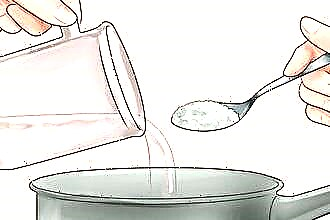Purulent tonsillitis (acute tonsillitis) is considered a widespread and at the same time extremely unpleasant disease. Most people get tonsillitis in childhood. There are several forms of this disease, among which the most dangerous are purulent diseases. The main distinguishing feature of purulent tonsillitis is a plaque on the tonsils. Moreover, this type of angina occurs quite often, therefore it is extremely important to establish the correct diagnosis in time in order to prescribe the appropriate treatment.
Causes of occurrence
 This disease manifests itself as a result of inflammation of the tonsils, as a result of the ingestion of various pathogens into the body: bacteria, viruses, less often fungi. Most often, the causative agent of angina is streptococcal infection, which is transmitted from a patient to a healthy person, mainly by airborne droplets.
This disease manifests itself as a result of inflammation of the tonsils, as a result of the ingestion of various pathogens into the body: bacteria, viruses, less often fungi. Most often, the causative agent of angina is streptococcal infection, which is transmitted from a patient to a healthy person, mainly by airborne droplets.
Important! The patient with angina must be immediately isolated from others.
It is worth noting that purulent tonsillitis in adults can also appear due to various gum diseases or caries, since these diseases of the oral cavity imply the development of a large number of pathogenic microorganisms. The cause of sore throat can also be a runny nose that is not fully treated.
If you feel chills, weakness, a significant increase in temperature, a sharp sore throat and enlarged tonsils, then you most likely have acute tonsillitis. If, in addition to the symptoms listed above, the surface of the tongue is coated with a coating and an unpleasant odor is felt in the mouth, then these symptoms are nothing more than signs of purulent sore throat.
The main cause of tonsillitis in both adults and children is the process of infection of the tonsils with streptococcal bacteria. The primary damage to these particular tissues can be explained by their high susceptibility to pathogenic microorganisms of this type. Also, the tonsils are lymphoid tissue, which acts as a natural protector of the whole body from the penetration of bacteria and viruses. Therefore, if the infection descended below and struck the organs and tissues, then this indicates that the tonsils did not cope with their task.
Symptoms of the disease
Experts distinguish between two types of tonsillitis:
- acute tonsillitis;
- chronic tonsillitis.
If the patient develops the first variant of the disease, then, most likely, angina has arisen for the first time. This most often occurs in children when the body first encounters a pathogenic microbe. Whereas in adults, the tonsils are less susceptible to the influence of streptococcus.
As for the chronic form of the disease, it can occur in both children and adults, and is associated with a high concentration of microbes on the surface and in the tissues of the tonsils.
Despite the presence of various forms, tonsillitis has the same symptomatic picture in both cases. Among the main symptoms are:
- sharp pain in the throat. Moreover, the pain increases in the process of chewing and swallowing solid food;
- severe hyperthermia of the body, often up to high values of the order of 39-40 degrees;
- general weakness, lack of appetite. Most often, the cause of this symptom is a sore throat, which does not allow you to fully eat and restore the body's loss of strength;
- dizziness, headaches, aches. All these signs are the main indicator of the appearance of intoxication caused by the activity of pathogenic microorganisms;
- swelling of the tonsils to a critical size, when they can completely block the passage to the pharynx, while completely becoming covered with a purulent bloom;
- growth of lymph nodes. Most often, tonsillitis is characterized by symptoms such as enlargement of the submandibular, parotid and occipital nodes.
All of the above symptoms of purulent sore throat are typical signs of this disease, which proceeds without complications. However, quite often, in cases where the correct treatment with antimicrobial drugs is not carried out, various complications can occur, among which are:
- paratonsillar abscess. This process is characterized by suppuration of the tonsils, as well as the formation of pus in the almond tissues;
- rheumatism, manifested in the form of complications in the heart muscle, as well as arthritis, accompanied by inflammation of the cartilage tissue;
- glomerulonephritis, characterized by inflammation in the renal tissue, accompanied by impaired basic functions;
- also chronic tonsillitis can be the source of various pyoinflammatory processes due to the spread of pathogenic microorganisms with blood flow.
Features of the disease in childhood
It is in childhood that tonsillitis first affects the tonsils. It is necessary to highlight the factors in the presence of which the disease occurs. So, acute tonsillitis is possible with the simultaneous development of several mechanisms:
- The emergence of a high susceptibility of the child's body to streptococcus antigens.
- Problems with the immune system, disorders in which can occur in the presence of other diseases that could lead to a weakening of the body's defenses.
- Chronic diseases localized in other organs of the nasopharynx.
- Local decrease in immunity due to hypothermia of the throat or the whole body.
The clinical picture of tonsillitis in children is similar to that found in adults, since the symptoms of purulent tonsillitis are similar. However, in children, angina has its own characteristics and is often not limited exclusively to an infection on the tonsils, spreading to other organs, and is characterized by a more severe course.
Features of the treatment of tonsillitis
 There are specific recommendations for the treatment of purulent sore throat, which are approved by the society of otolaryngologists and infectious disease specialists. Comprehensive treatment of tonsil diseases should include the following steps:
There are specific recommendations for the treatment of purulent sore throat, which are approved by the society of otolaryngologists and infectious disease specialists. Comprehensive treatment of tonsil diseases should include the following steps:
- Antibiotic therapy. First of all, doctors prescribe protected semisynthetic aminopenicillins, as well as antibiotics of the cephalosporin group.
Important! Treatment of angina is impossible without the use of antibiotics.
- Local treatment of tonsil abscesses. It has been proven that with excessive pressure on the tonsils with a purulent form of the disease, toxic products spread that can enter the bloodstream. Therefore, to eliminate purulent plaque, it is necessary to use rinsing with antiseptic solutions and irrigation of the larynx with special antibacterial sprays.
- The use of anti-allergic and anti-inflammatory drugs. The use of these drugs helps to reduce swelling and sore throat, as well as overcome the toxic effects of drugs on the body.
It is also possible to use infusion-detoxification therapy in situations with severe intoxication.
In this case, it is necessary to start treatment immediately, and be sure to seek help from a specialist. Since delay increases the risk of complications and converts tonsillitis into a chronic form.
Ways to eliminate symptoms
 Often, any cold caused by an infection starts the same way. The patient feels pain when swallowing. If it is not yet clear what kind of infection you are experiencing, you need to immediately start eliminating the symptoms. So, it is important to start procedures aimed at the local elimination of pathogenic microorganisms in the oral cavity. It's about rinsing.There are many varieties of decoctions and infusions used for procedures for various diseases of the nasopharynx, and in particular, purulent sore throat.
Often, any cold caused by an infection starts the same way. The patient feels pain when swallowing. If it is not yet clear what kind of infection you are experiencing, you need to immediately start eliminating the symptoms. So, it is important to start procedures aimed at the local elimination of pathogenic microorganisms in the oral cavity. It's about rinsing.There are many varieties of decoctions and infusions used for procedures for various diseases of the nasopharynx, and in particular, purulent sore throat.
For the preparation of infusions and decoctions for rinsing the mouth with purulent sore throat, which are suitable for the treatment of adults and children, a large number of different methods are used. So, you can use iodine-salt solutions, beet juice, lemon juice, infusion of chamomile, calendula and eucalyptus, effectively use decoctions of St. John's wort, plantain, wormwood, etc. and disinfectant effect.
Staphylococcus aureus is resistant to iodine, however, after regular use of Lugol, the bacteria are destroyed.
Also, modern drugs used to disinfect the nasopharynx are highly effective in eliminating the symptoms of purulent sore throat. Furacilin and chlorophyllipt are time-tested drugs with a high antimicrobial effect. You can buy these drugs at the pharmacy.
Important! Before using any drug, prior consultation with a doctor is required.
Possible complications
Angina is a rather serious disease, but a timely diagnosis and correctly started treatment guarantees a complete recovery without any complications. If the treatment is ineffective, then from the bacteria that caused the disease, complications on the heart system can be expected, because first of all, pathogenic microorganisms, together with the bloodstream, affect the heart muscle. Other complications caused by a large amount of pus on the tonsils are possible, among which the occurrence of abscesses, laryngitis, otitis media, and kidney disease are distinguished.
Scarlet fever can often become a complication as a result of purulent sore throat, because this disease is caused by the same streptococcal bacterium. If pus enters the tissues surrounding the tonsils, a paratonsillar abscess may occur.
In order not to meet with possible complications arising from any form of angina, it is necessary to take care of timely and correct treatment, which will quickly eliminate the symptoms of the disease and prevent chronic tonsillitis from occurring.



